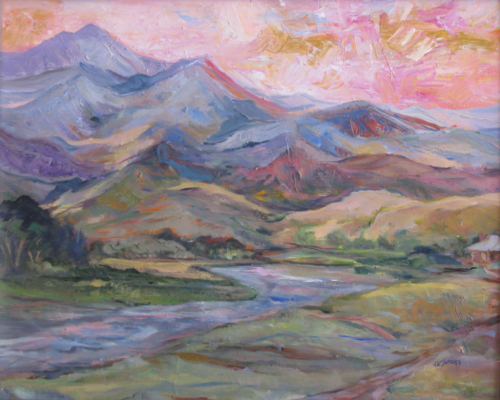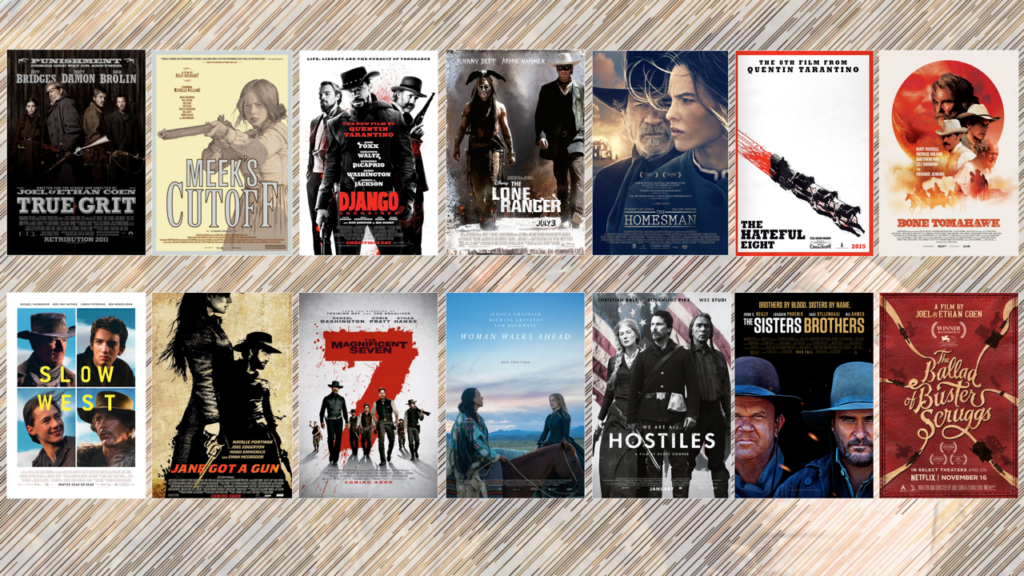Thanks to its converging rivers and configuration of mountain passes, the Gallatin Valley has always been a crossroads of people and culture. The Blackfeet called it Ahkoto Waktai Sakum, Many-Come-Together country. This program celebrates natural and cultural connections that have a strand passing through this place.
-
The Buffalo Commons
On March 27, 2024, The Ivan Doig Center for the Study of the Lands and People of the North American West at Montana State University hosted at talk at the Museum of the Rockies entitled: “The Buffalo Commons: A National History, A Regional History, A Family History.” Deborah and Frank Popper saw the rural decline in Great Plains states and suggested replacing economically struggling agriculture with a vast, restored grassland populated by buffalo. This idea they called the Buffalo Commons. 37 years later, they reflect on that vision, its modern relevancy, and its consequences for Montanans and themselves.
or Download -
Living History Farm – Blacksmithing
This show is the second in a series about the Living History Farm at Museum of the Rockies, which provides visitors with an immersive, field-based learning experience of Montana’s homesteading and agricultural history. Explore the Farm, including its gardens, buildings, and activities, through this program.
Produced by Angie Weikert, Museum of the Rockies. Photo courtesy Museum of the Rockies.
or Download -
Living History Farm – Heirloom Gardening
The Living History Farm Gardens at the Museum of the Rockies feature heirloom plants available to homesteaders by in the 1890s. Homesteaders had access to a wonderful variety of garden products that could withstand the harsh western conditions of Montana. In this program, Living History Farm Manager Dave Kinsey, shares the history of the museum’s garden, the vegetables being planted this year, and tips for gardening in the Gallatin Valley.
This show is the first in a series about the Living History Farm at Museum of the Rockies, which provides visitors with an immersive, field-based learning experience of Montana’s homesteading and agricultural history. Explore the Farm, including its gardens, buildings, and activities, through this program.
Produced by Angie Weikert, Museum of the Rockies. Photo courtesy Museum of the Rockies.
or Download -
Western Movies Today: History, Criticism, Production
We are accustomed to hearing great films discussed in terms of their influence on later movies, and Westerns are no exception. The makers of recent Western movies routinely discuss their works in relation to classics like The Searchers or Shane. But how, you might ask, were these filmmakers introduced to Westerns? By their grandparents? Or by someone else? In fact, the majority of filmmakers today were first introduced to the Western as an academic subject in the course of their professional training. How this influences the movies they make, and what it means for our understanding of the Western’s rich history, are just two of the topics covered in this exploration of the current state of the Western movie.
Andrew Patrick Nelson is an historian of American cinema and culture, film programmer, museum curator and media commentator. He is chair of the Department of Film and Media Arts and associate professor of film studies at the University of Utah.
Recorded at the Museum of the Rockies on December 2, 2019.
or Download -
Rivers of the American West
Rivers are the lifeblood of the American West. We depend on them to provide water, power, protein, recreation and so much more. Yet, our dependence on rivers has paradoxically changed them in ways that threaten their ability to sustain our own livelihoods.
River scientists have worked hard to understand the properties of rivers and have uncovered fascinating details about how these ecosystems ‘work.’ They have learned that healthy rivers are physically complex, biologically diverse, and thrive best when they are allowed to change naturally over time.
Wyatt Cross, professor in the Department of Ecology and Director of the Montana Water Center at Montana State University, tells us about this subject in his talk “Rivers of the American West: Embracing Biological Complexity for a Sustainable Future”, presented by The Ivan Doig Center for the Study of the Lands and Peoples.
Recorded at the Museum of the Rockies on October 28, 2019.
or Download -
Community-Centered Research and Indigenous Education: Christine Stanton
Christine Stanton is a Professor in the Department of Education at Montana State University. In a recent Provost’s Lecture, she tells about her research and experiences in indigenous communities, such as Lander, Wyoming, where her career began. Her term for this work is “community-centered participatory research,” which relies on indigenous mentors who are co-creators of the findings and stories that result. Stanton situates her efforts within a framework of four R’s: relationality, reciprocity, responsibility, and respect.
Recorded at the Museum of the Rockies on October 15, 2019.
or Download -
Defending the Badger – Two Medicine Region
The Badger-Two Medicine area is a site in Northwest Montana on the border of the Blackfeet Reservation and Glacier National Park in the Lewis and Clark National Forest. The location is the home to the creation story of the Blackfeet people, and has been involved in contentious oil and gas drilling leases since the 1980’s. Beyond its importance to the Blackfeet Reservation, the site’s proximity to Glacier National Park and the Bob Marshall Wilderness Area means it acts as an important corridor for many of Montana’s most threatened wildlife species. The Montana Public Interest Research Group, or MontPIRG, held an informational event regarding this area on July 18th, 2019.
or Download -
What Can Greater Yellowstone Learn From Africa?
The Greater Yellowstone Ecosystem is recognized as a standard for dealing with issues of large landscape conservation. Parallels are often drawn between Greater Yellowstone and other areas around the globe, including sub-regions of southern Africa. In this presentation, two Namibia-based conservationists, Dr. Margaret Jacobsohn and Garth Owen-Smith, describe their cutting edge work in community-based conservation. Jacobsohn and Owen-Smith are past recipients of the prestigious Goldman Prize, and are introduced by a brief video produced by the Goldman Environmental Foundation. You can learn more about them and their work in this Mountain Journal article.
Sponsored by The Mountain Journal, Hopa Mountain, and the Goldman Environmental Foundation. Recorded on February 7, 2019 at the Museum of the Rockies.
or Download -
Conservation and Conversation
Noted conservationists and scientists Mike Clark, Jim Posewitz, Rick Reese and Cathy Whitlock discussed their careers and environmental challenges facing our region today. Each panelist has a special relationship with the Greater Yellowstone Ecosystem and played a pivotal role in historical conservation efforts and/or scientific research throughout the region. Todd Wilkinson, journalist, author and Mountain Journal founder, posed questions and led the conversation. There was also a question and answer session with the audience. A videorecording of the event can be viewed on the MSU Library website.
Sponsored by the Friends of MSU Library. Recorded at the Museum of the Rockies on October 23, 2018.
or Download -
Our Yellowstone: Todd Wilkinson & Rick Reese
Todd Wilkinson and Rick Reese discuss growth and the unprecedented eruption of development in Gallatin Valley and its permanent ecological and economic implications for the Greater Yellowstone ecosystem. Both speakers have a long history with the region.
Todd Wilkinson is a journalist and author of several books, and is founder of the on-line magazine Mountain Journal. Rick Reese was, among other things, the founding president of the Greater Yellowstone Coalition and director of the Yellowstone Institute.
Recorded at the Bozeman Public Library on September 27, 2018, as part of the month-long Our Yellowstone series.
or Download -
Bierstadt and Moran: The Battle for Yellowstone
Peter Hassrick, writer, art scholar, and museum director, presents the history of painting in Yellowstone by the major 19th century painters, Albert Bierstadt and Thomas Moran. He examines these acclaimed landscape artists’ competing claims on the nation’s first natural preserve and their vital contributions to America’s conservation movement. These artists very much influenced and were influenced by the social and political climate of the time.
Recorded September 18, 2018 at the Museum of the Rockies, as part of Our Yellowstone, sponsored by the Bozeman Public Library.
or Download -
Taking the Pulse of Greater Yellowstone: Successes and Challenges in Sustaining a Wildland Ecosystem in the 21st Century
Yellowstone is famous for being the world’s first national park, one of the largest temperate wildlands, including all native species, and a role model for wildlife management. But like wildlands globally, Yellowstone is facing increasing human pressure and climate change. Andrew Hansen, professor in the Department of Ecology and director of the Landscape Biodiversity Lab at Montana State University, discusses the concept of “greater” in the moniker Greater Yellowstone Ecosystem, the impact of people in the wildlands, trends in vital signs of ecological health and ways forward in the coming century. (more…)
or Download -
Bighorn Sheep and Mountain Goat Conservation and Ecology in the Northern Rockies
Dr. Robert Garrott, professor of wildlife ecology in MSU’s Ecology Department, describes the conservation history of bighorn sheep and mountain goats in the Greater Yellowstone Area and Montana. He shares ecological insights from his ongoing research project involving long-term studies of these two iconic mountain ungulates. He also discusses an exciting bighorn sheep restoration effort in the Madison Range.
This lecture was sponsored by Gallatin Valley Friends of the Sciences. Recorded at the Museum of the Rockies on September 20, 2017.
or Download -
High Noon: The Hollywood Blacklist and the Making of an American Classic
It’s one of the most revered movies of Hollywood’s golden age. Starring screen legend Gary Cooper (who attended high school in Bozeman) and Grace Kelly in her first significant movie role, High Noon achieved instant box-office and critical success. But what is often overlooked is that High Noon was made during the height of the Hollywood blacklist, a time of political inquisition and personal betrayal. In the middle of the film shoot, screenwriter Carl Foreman was called to testify about his former membership in the Communist Party, facing the painful dilemma of whether to name names or sacrifice his brilliant career. (more…)
or Download

